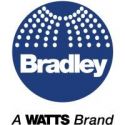Washrooms present untapped opportunities for sustainability, savings
Jason Renner
In the U.S. commercial building industry, sustainability has evolved from being a noteworthy differentiator to an expectation on the part of architects, facility managers and consumers. Consider these statistics from the U.S. Green Building Council and the Institute of Environmental Entrepreneurship about the rise of Leadership in Energy and Environmental Design (LEED) certifications over the last decade: In 2005, there were approximately 2,000 LEED-certified buildings in the United States, today there are more than 44,000 LEED-certified or -registered projects. The number of LEED-certified federal building projects in the U.S. increased by 50 percent between 2011 and 2012. In 2005, 2 percent of all non-residential building starts were considered “green” – today the figure is 41 percent and by 2015 it is projected to be 50 percent.Despite the remarkable achievements of the green building movement and the heightened emphasis placed on sustainable design and construction, more can be done to reduce the environmental impact of washrooms, which too often remain hotbeds for resource waste. Two of the biggest opportunities for improvement are reducing water consumption and paper towel use. We expect these issues – along with their associated cost implications – to become more pronounced over the near term given the dynamics associated with growing demand for finite resources.Water supply – or more specifically, water scarcity – is going to be one of the biggest factors impacting global dynamics in the 21st century. According to the World Economic Forum, by 2030 global water demand is predicted to increase to a level 40 percent above current supply. We can already see issues of water scarcity playing out in the Western U.S. as states fight over rights to the Colorado River. At this moment, commercial buildings consume 88 percent of America’s potable water and plumbing fixtures account for approximately 47 percent of that figure. All told, commercial plumbing fixtures account for nearly 40 percent of all potable water consumption in the United States. It’s easy to see where to look in order to conserve water and save money. Architects, design firms and facility managers should examine the flow rates of their commercial plumbing fixtures to reduce their bottom lines and conserve one of the most precious natural resources on earth. For example, your standard low-flow faucet uses half a gallon of water per minute and many commercial buildings are using outdated sinks that consume far more water than that. We have been able to reduce the flow rate of our sinks to .38 gallons per minute, while providing excellent water flow. That is more than a 24 percent improvement over other low-flow sinks – and much more in the case of older sinks. The cost savings that can be achieved by improving water management in commercial washrooms are not trivial. According to the Natural Resources Defense Council, the Port Authority of New York and New Jersey upgraded the restroom facilities at LaGuardia Airport to increase the efficiency of toilets, faucets and showers. It installed a leak detection system, ultralow-flow toilets, high-efficiency aerators for faucets and flow restrictors on showerheads. These improvements yield annual water savings of almost $160,000, after an initial capital investment of only $90,000. The Veterans Affairs Hospital in Portland, Oregon, performed a water audit and implemented a variety of water-saving measures, including low-flow toilets, faucets and showers. These measures save more than $50,000 per year. In addition to water conservation, paper towel use remains another opportunity to reduce the environmental impact of commercial washrooms. Next year, consumers and businesses will use more than 13 billion pounds of paper towels at a cost of approximately $2.3 billion. Thirty percent of timber consumed in the U.S. is used to make paper products and paper use is expected to increase approximately 46 percent by the year 2040. Where will all those paper towels end up? A recent study released at TED Talk Portland found that the equivalent of 270 million trees are flushed down the toilet or thrown in the garbage each year. High-efficiency hand dryers can completely eliminate paper towel waste and – unlike older generations of hand dryers – are a greener alternative than paper towels. The Massachusetts Institute of Technology conducted a study in 2011 that demonstrated new hand dryer models produce 70 percent less carbon dioxide emissions than paper towels.In terms of cost savings, we estimate that our high-efficiency dryers cost approximately 20 cents per 1,000 washes compared to $20 for comparable paper towel use. That differential can also be a major source of cost savings – especially in high-traffic environments. In addition, facility managers will no longer need to worry about paper towels overflowing from garbage cans or lining washroom floors. Their maintenance crews, and associated dollars, will be free to focus on other tasks.While the green design movement can count many victories over the past decade, the industry needs to do more to reduce environmental impact in the face of growing demand for limited and valuable resources around the globe. Commercial washrooms are a great place to start.Jason Renner is the senior product manager at Bradley Corporation, a leading manufacturer of commercial plumbing fixtures and washroom accessories. He recently led the development of the company’s new Advocate AV-Series Lavatory System.
Bradley Company
For more than 100 years, Bradley has been known as the leader in advanced commercial washrooms and comprehensive emergency safety solutions that make public environments hygienic and safe. Bradley innovated the industry’s first and most specified WashBar multi-function touchless handwashing and drying fixture. Washroom accessories, partitions, HDPE lockers, as well as emergency safety fixtures and electric tankless heaters round out its product range. Based in Menomonee Falls, WI, Bradley Company, a subsidiary of Watts Water Technologies, serves commercial, institutional and industrial building markets worldwide. www.bradleycorp.com.
Address:
W142 N9101 Fountain Blvd.Menomonee Falls WI 53051
United States
(800) 272-3539
https://www.bradleycorp.com
